Same-sex love in classical Indian literature
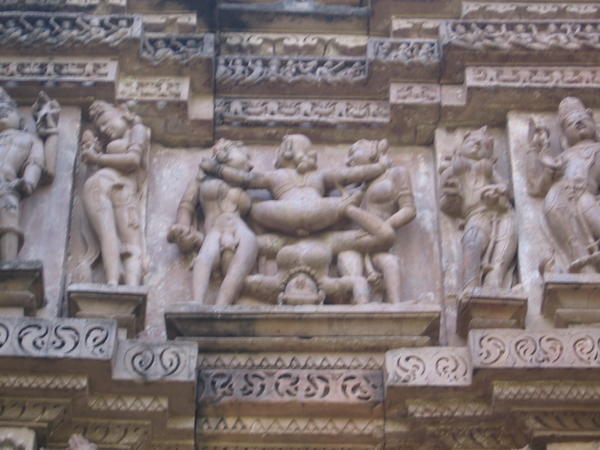
Lesbian action
Well, that or women and big breasted men having fun
by Sheo S Rai
Foreword by Yawning Bread
This was the talk given by Sheo S Rai on 16 August 2005, as part of IndigNation,
Singapore's first gay and lesbian pride month.
It is often said by ignorant and/or homophobic people that same-sex
relationship and love is a Western import. The term “Western” itself
is an anomaly as it assumes that the West is a monolithic entity; but
that’s another issue.
In this essay, I will reveal that same-sex relationship and love is not
an alien import but rather has existed in Indian society throughout the
ages [1]. That ironically, it was homophobia that was an import from
the ‘West’ rather than homosexuality. Same-sex love has existed
in Indian society and culture and this can be seen if one were to do
a literature survey.
This essay will have three parts, each touching on the literature of era, each giving a sampling of the works of the particular era. You will notice that a lot of religious texts will be quoted as well as religious icons will be mentioned. The reason for this is that when one talks about Indian culture and literature, one cannot get away from the spiritual aspect. Indian society is deeply intertwined with it, be it with Buddhism, Hinduism, Islam, Jainism or Sikhism.
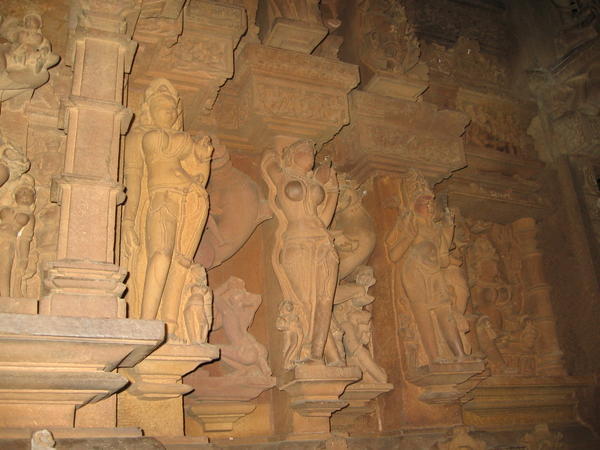
I. Ancient (Before 8th C) and Medieval (8th to 18th C) Sanskritic, Buddhist & Jain Traditions
Friendship & Marriage
Friendship between same-sex (predominantly between men) was often expressed in intimate terms. An example of this closeness is the relationship between Krishn and Arjun.
Krishn says to Arjun:
Thou art mine and I am thine, while all that is mine is thine also! He that hateth thee hateth me as well, and he that followeth thee followeth me! … O Partha, thou art from me and I from thee. (Vana Parva [2])
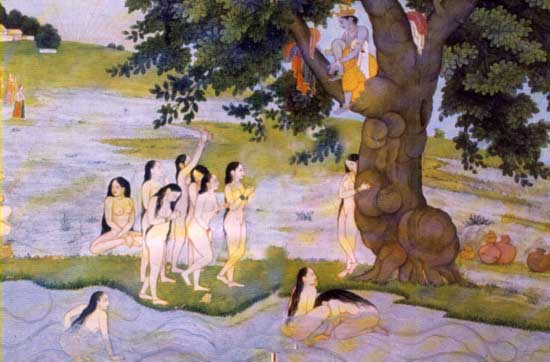
On the last night before returning to Dwarka:
Krishn of great energy proceeded to the apartments of Dhananjay [3]. Worshipped duly and furnished with every object of comfort and enjoyment, Krishn of great intelligence passed the night in happy sleep with Dhananjay as his companion. (Aswamed Parva [4])
So sacred was friendship that it used the same symbolism as the seven circambulations made around the sacred fire during a Hindu wedding. Saptapadam hi mitram or seven steps taken together constitutes friendship. Ram and Sugriv walked round the fire seven times to seal their friendship [5].
A prominent character in the Mahabharat, Bhisma, was actually quite against it. He said that a man goes to a woman “for the sake only of offspring” as a one who overcomes all difficulties. He also mentioned that sex and marriage came when the human race degenerated.
In the five books of the Panchatantra[6], what is to be noted is that all the characters (animals of different species) are male and form close friendships. In one story, friendship triumphs marriage.
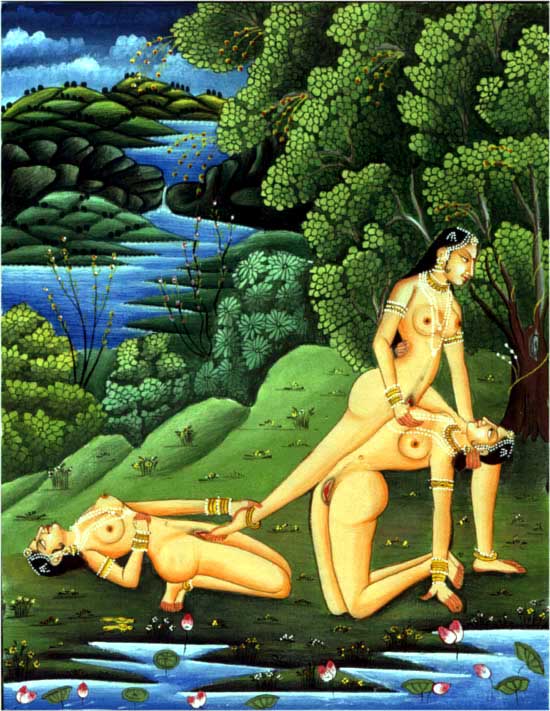
Births Other Than Natural
The obvious heterosexual pairing is absent in various instances. Sometimes it takes the form of being born from the elements and sometimes from same-sex unions or designs. Sita (Ramayan) and Draupadi (Mahabharat) were born from the earth and fire respectively. Jarasandh was born as two halves from two women and later joined by a demoness (Mahabharat). Kartiki was born by Agni swallowing Shiv’s sperm and hence is also know is Skanda from the verb skandri [7] (Shiv Puran [8]). Ayappan was born out of the union between Shiv and Vishnu in the form of Mohini (Bhagawat Puran). The latter depicts the fluidity of gender. Ganesh was born outside of the womb (Shiv Puran).
Shiv ordered two women to have sex in order to have children after their husband died. Hence Bhagirath (meaning of the two vulvas) was born (Krittivas’s Ramayan).
Dual mothering is also another form free from same-sex pairing. Agni is also known as dwimatri or of two mothers. The gender of firesticks in Sanskrit is female. Friction, not penetration produces fire.
Here is the gear for friction, here tinder made ready for the spark.
Bring thou the Matron, we will rub Agni in ancient fashion forth.
Mortals have brought to life the God immortal
The sisters 10, unwedded and united, together grasp the Babe, the new
born Infant.
(Rig Veda [9])
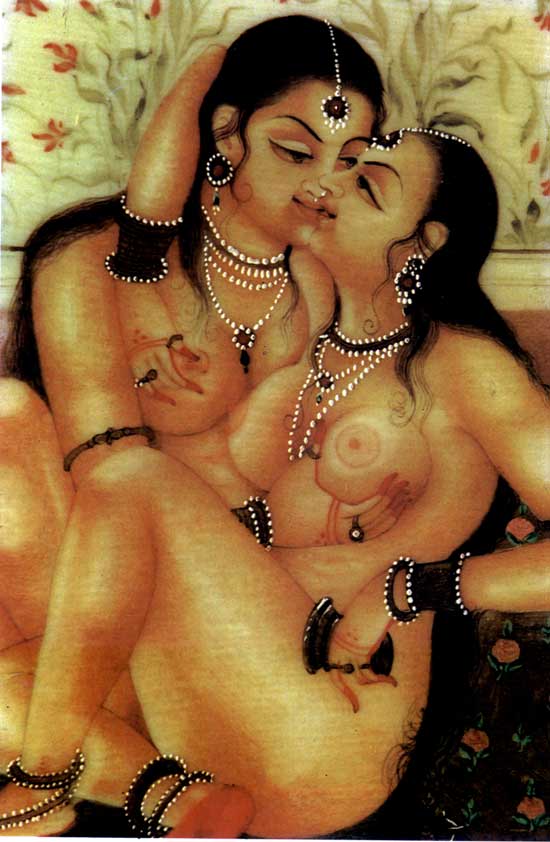
Sex Change
And then, among the many sex change stories, there are two that stand out – Sikhandi and Brihinala from the Mahabharat. Sikhandi was a woman in the previous birth reborn to avenge a wrong done to her. Popular TV depicts Sikhandi as an effeminate man. Bhisma recognised the woman in him and refused to wield a weapon against him. Bhisma said:
O joy of the Kurus, I will not use my arrows against a woman, one who was once a woman, one whose name is like a woman’s or one who resembles a woman. For this reason, I will not kill Sikhandi. (Mahabharat)
Brihinala was the name of Arjun when he, along with his brothers, spent their last year in exile in incognito. He was a hermaphrodite – he had a man’s physique with a woman’s disposition.
Apart from the above two, another transformation stands out – Vishnu in the form of Mohini. In addition, there was also a term kimpurush, a “what man” – a being that would be a man in one month and a woman in another.
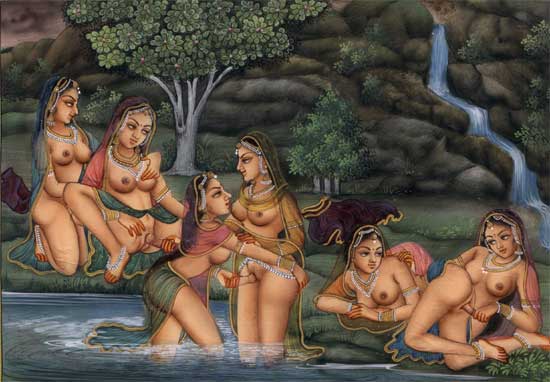
Gender as a Construct
The Vimalakirtinirdesa, in Mahayana Buddhism, relates about a monk, who after being turned into a woman by a goddess and then back to a man, is asked whether he felt anything different, anything innate about being a woman. He reveals that nothing about gender is innate. The goddess explained:
Just as you are not really a woman but appear to be female in form, all women also appear to be female in form but are not really women. Therefore, the Buddha said that all are not really men or women … All things neither exist nor do not exist. The Buddha said there is neither existence nor non-existence.
If there is nothing innate about gender, then is heterosexuality the one and only way?
Patajali’s grammar [10] and Jain texts talk about the concept the third sex with various ambiguous subcategories such as kliba, pandaka and napunsak. These have been part of the Indian worldview for nearly 3,000 years.
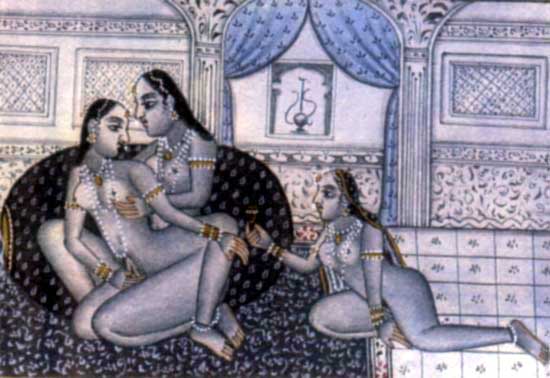
Other examples of explicit same-sex love and desire
Jain philosopher, Sakatayana, in the Strinirvanaprakaran said that a person was capable of being aroused by the same-sex, opposite sex or even a non-human animal. Going further, Jain thinkers said that there were three types of desires – from men, women and the third sex. Hence desire was fluid and transient.
In the Manikantha Jataka [11], the King of Serpents falls in love with a young ascetic. After a while, when the King is gone, the young ascetic grew pale from missing him.
The Kamasutra [12] specifically caters for all inclinations. The book is instructional and not prescriptive. It says that one should act according to local customs and one’s own inclinations and desires. It specifies three types of genders – pums prakriti, stri pakriti and tritiya prakriti – men, women and the third sex. The third sex was further broken down to various categories which included manly and effeminate gays and manly and effeminate lesbians. It is interesting to note that the book says that manly gays who hid their desires fulfilled them by working as masseurs and hairdressers. It even describes how masseurs work their clients to a achieve orgasm for both of them.
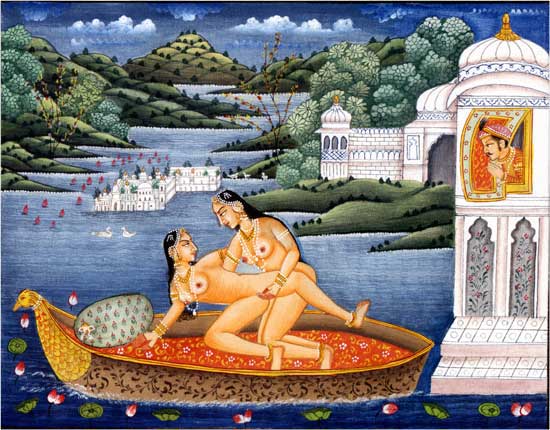
II. Medieval Materials – Perso-Urdu Traditions
During this period, homoerotic men were mentioned in a non-pejorative way. There were poets who wrote about their love for adolescent boys, sultans in love with their male slaves and Sufi mystics who pined for their lord like female lovers. Gay men were well integrated into the culture of cities like Delhi.
An example of a long term relationship was that between poet Mukaram Baksh and Mukkaram. After the former’s death, the latter observed a period of mourning observed by widows.
Sufi mystics believe in personal experience not dogma. To them, same gender love could transcend sex and therefore not distract them from the ultimate aim of gnonsis. They would adopt a female persona in their poems and songs when writing about God.
Urdu poets neither celebrated or denigrated homosexual love to the exclusion of other types of passion. Marriage was seen as a legitimate sphere of sexual activity but not of experiencing erotic energies. As long as a man fulfilled his duties of a householder, he was free to seek sexual pleasure and emotional involvement elsewhere. Hence erotic commitment was not a threat to marriage. One poet, Abru [13], when to such an extent to reject heterosexuality saying:
He who prefers a slut to a boy, is no lover, only a creature of lust.
Here are some examples same-sex attraction, love and liaisons:
Amir Khusrao, mystic poet-musician, mourned his mentor’s, Chishti saint Shaikh Nizamuddin Aulia’s, death:
The beauty sleeps on the bridal bed, her tresses all over her face;
Come Khusro, let’s go home, for darkness settles all around.
Looking at the empty bed, I weep day and night
Every moment I yearn for my beloved, cannot find a moment’s peace.
He has gone, my beloved has crossed the river,
He has gone across, and I am left behind. …
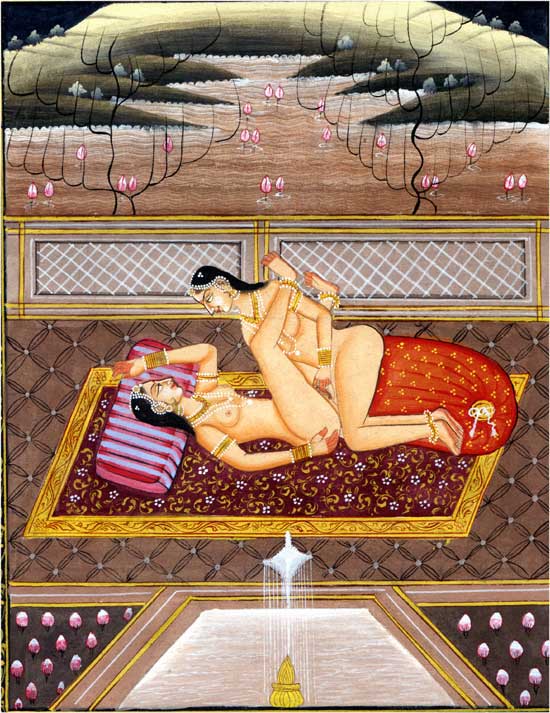
Sultan Qutbuddin Khalji, like his father Alauddin Khalji, were in love with their slaves. Qutbuddin’s slave was Khusrao Khan. Wrote a writer of their times:
He often wanted to put a sword through the Sultan and kill him while he was doing the immoral act of publicly kissing him. This vile murderer of his father was always thinking of ways to kill the Sultan. Publicly he offered his body to the Sultan like an immoral and shameless woman. But within himself he was seething with anger and choking on a desire for revenge at the way the Sultan forced himself upon him and took advantage of him.
When hauled before a king to explain a charge against him for dancing with crossdressers, said the mystic Akhi Jamshed Rajgiri:
I do not want a crown, I do not want a throne. I only want to rub my forehead in the dust and dance with abandon over the earth. If the Sultan would show me favour, then I might be allowed to dance even upon the winds … Because those who denounce me are not real men in the spiritual sense, they cannot accept love with all its consequences in their hearts. Oh my love, there a thousand snares in every form; oh my love, one who is not a real man can never experience true love!
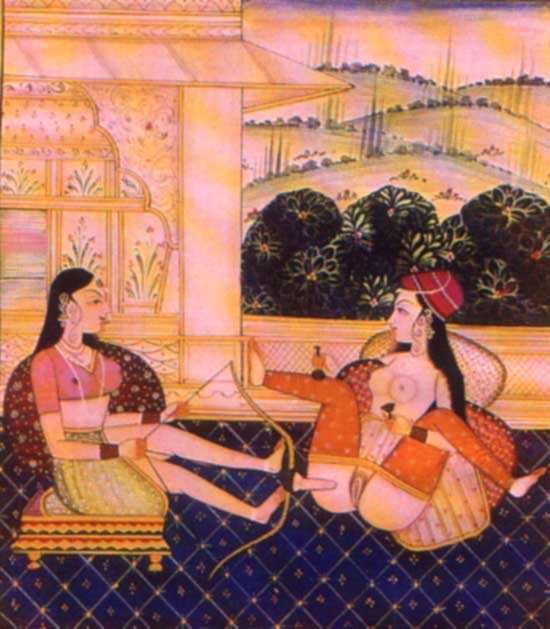
Mughal emperor Babur wrote in his memoirs the Baburnama:
I maddened and afflicted myself for a boy in the camp-bazaar, his very name, Baburi, fitting in. Up till then, I had had no inclination for any-one, indeed of love and desire, either by hear-say or experience, I had not heard, I had not talked. … One day during that time of desire and passion when I was going with companions along a land and suddenly met him face to face. I got into such a state of confusion that I almost went right off. To look straight at him or to put words together was impossible. With a hundred torments and shames, I went on.
When Mughal emperor Jehangir asked poet-scholar Mutribi Samarqandi whether a fair young man was more beautiful than a dark one, the latter replied when he saw a dark-skinned youth:
A Hindu boy stole my wretched heart
He stole its tranquillity and its calmness
My reason, my judgement, my endurance, my patience
All of these he stole with his laugh.
He then saw a fair-skinned youth and said:
O moon-faced beauty in this beautiful night
So astonishingly desirable in the light if the candle
You have stolen Mutribi’s heart altogether
With a wink, guilelessness, playfulness and amiability.
Do not tell me to look at the splendour of the perfumed plants
My heart is your captive, what do I need from there?
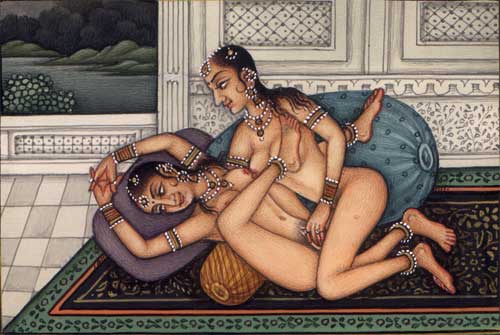
III. Modern Indian Materials (19th to 20th C)
There were basically two developments that occurred during this period. The first was the rise of the homophobic voice in literature and the second, the sexual love between women becomes more prominent while that between men is drastically reduced.
There are five words for homoerotically inclined women – dugana, zanakhe, sa’tar, chapathai and chapatbaz.
Rekhti, poetry written by male poets in the female voice and using female idioms, became prominent in the late 18th and 19th C but in the 20th C, its was labelled as obscene.
An example of women loving women can be seen below. This is not imitating heterosexual love. Although a dildo is mentioned, there is an emphasis on kissing, petting, passionate embraces and clitoral stimulation. Shaikh Qalandar Baksh puts it in the following words:
I’d sacrifice all men for your sake, my life,
I’d sacrifice a hundred lives for your embraces
How beautiful is it when two vulvas meet –
This is the tale they tell each other all the time:
The way you rub me, ah! …
When you join your lips to my lips,
If feels as if new life pours into my being,
When breast meets breast, the pleasure is such
That from sheer joy the words rise to my lips:
The way you rub me, ah! …
How can I be happy with a man – as soon as he sits by me
He starts showing me a small think like a mongoose --
I’d much rather have a big dildo
And I know you know all that I know …
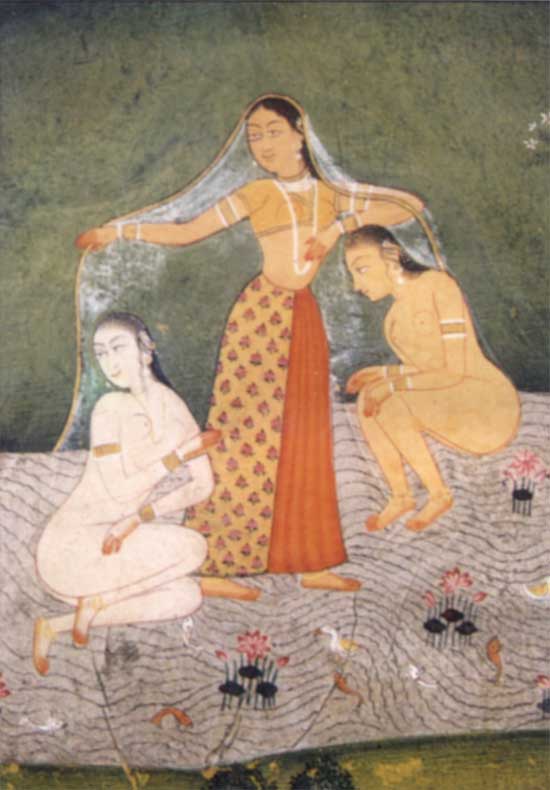
It must be noted that in pre-colonial India, not a single person was ever executed for homosexual behaviour. In contrast, gays were vilified, tortured and/or executed. In 1860, the anti-sodomy law came into being and incorporated in the Indian Penal Code (Section 377). While this proved to be progressive for Britain because the killing stopped, it was retrogressive for India. British educators and missionaries denounced Indian culture. The educated Indian elite became their agents – while not condemning the culture, they did not reject puritanical Victorian values which were put on a pedestal. In fact they claimed that Indian culture was originally similar to the Victorian one, which was both anti-pleasure and anti-sex.
The homophobia was so internalised by educated Indians that Pandit Madhavacharya in 1911 introduced the Kamasutra by saying that people should read the book for the right forms of love making and avoid the wrong ones.
However despite all the attempts by prudes, life went on and same-sex love survived in literature. One example is by Vikram Seth:
Some men like Jack
and some like Jill;
I’m glad I like
them both; but still
I wonder if
this freewheeling
really is an
enlightened thing –
or is its greater
scope a sign
of deviance from
some party line?
In the strict ranks
of Gay and Straight
What is my status?
Stray? or Great?
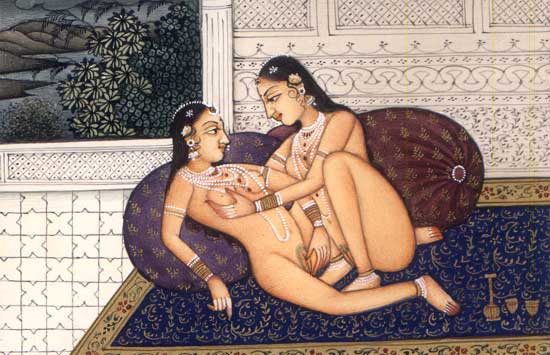
Maulana Abdul Kalam Azad, a respected Muslim theologian, placed heterosexual and homosexual desire on the same plane.
No one is worthy of being called a human unless he has crossed the Rubicon of love. He who has not experienced the intensity of desire or the deluge of tears is less than human. When the ascetic in the mosque bows his head in Namaz, despite all his piety and devotion, he cannot help enjoying thoughts of smiling Houris and Ghilmaans of Paradise. Even the super-ascetics who seek the truth in the recesses of the mosques are not free from these alluring images.
Sanskrit scholar and priest of the Vaishnav temple in Sri Rangam said
that same-sex lovers must have been heterosexual lovers in previous
births. While the sex may change, the souls remain the same and this
impels the souls to seek out one another. He added:
Homosexuality is also a design of Nature. Earth is overpopulated by the human species and the Earth Mother – Bhoomi Devi – is no longer able to carry the burden. So this is one of Mother Nature’s way (sic) of combating population explosion. Nature will not allow any species to dominate completely … The sly human is exterminating vitally important insect, plant, and even mammalian life in order to make life for himself more luxurious.
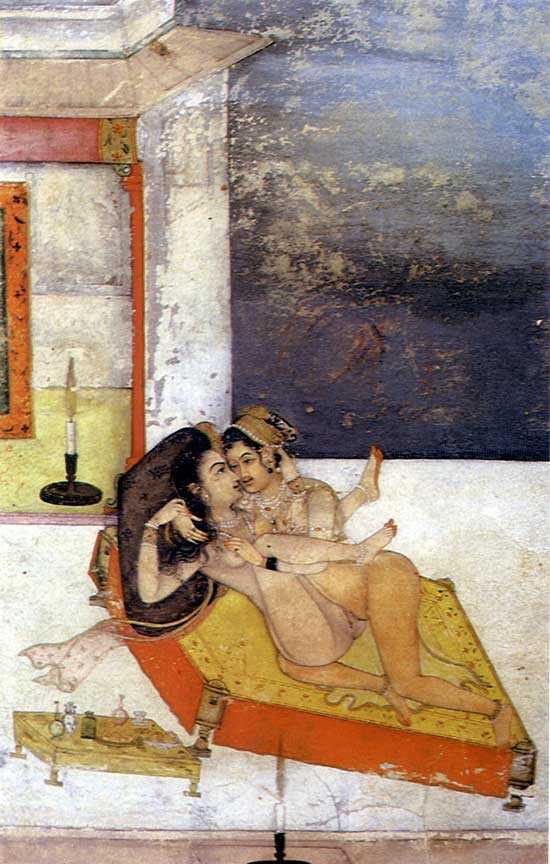
Conclusion
Many examples on same-sex love and relationships exist in Indian history. I have done injustice by only quoting a few. What was love so sublime has been tarnished by modernity. Like in many other instances, what is glaring is ignored. Despite the various examples of same-sex love in Indian literature, people choose to ignore it as it causes them discomfort or worse, cognitive dissonance.
Gays and lesbians are not special. They have been made so by homophobia.
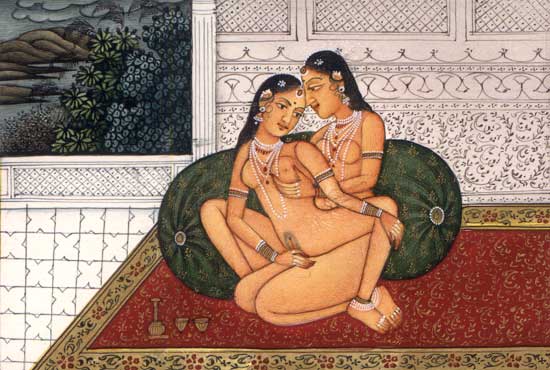
--------------------------------------------------------------------------------
Foreword by Yawning Bread
This was the talk given by Sheo S Rai on 16 August 2005, as part of IndigNation,
Singapore's first gay and lesbian pride month.
Footnotes
This essay is based heavily on the book “ Same-sex Love in India,
edited by Ruth Vanita and Saleem Kidwai”. This amazing book is
a seminal work on same-sex relationship in Indian literature. It gives
extensive examples throughout the ages.
From the Mahabharat, a Hindi epic written by Sage Vyas, reputed to be
the longest work of poetry in the world. This talks about a feud between
two sets of cousins – the Pandavs and the Kauravs. Krishn, chief
of the Yadav clan and the 8th incarnation of Vishnu aids the Pandavs.
(ca. 8th BC – 5th AD)
Another name of Arjun.
From the Mahabharat.
From another Hindu epic, Ramayan, written by Sage Valmiki. (ca. 5th
C BC – 5th C AD). This Sanksrit original was later translated to
various Indian languages such as in Hindi by Tulsidas, Tamil by Kamban,
Bengali by Krittivas and others. This is the story of Ram, the 7th incarnation
of Vishnu, who was exiled and later defeated Ravan, the king of Lanka
who abducted Sita, Ram’s wife.
Panchatantra, written by Vishnu Sharma, is a collection of five volumes
of stories written by a teacher to help instruct the different aspects
of kinghood for princes. The five volumes together serve as a manual
for a prospective king, to help him in deciding how to rule, how to choose
his fellow friends, fellow ministers, how to conduct himself in daily
life etc. This was probably put together around 300 AD.
That which is spilled or oozed, namely semen.
The Purans are a class of literary texts, all written in Sanskrit verse,
whose composition dates from the 4th century BC to about 1,000 AD. The
word "Puran" means "old". There are eighteen major
Purans and a few minor ones. Each is a long book consisting of various
stories of the Gods and Goddesses, hymns, an outline of ancient history,
cosmology, rules of life, rituals, instructions on spiritual knowledge.
The other set of texts important to Hinduism are the Upanishads. There
are 108 Upanishads in all. Upanishad means the inner or mystic teaching.
The term Upanishad is derived from upa (near), ni (down) and s(h)ad (to
sit), i.e., sitting down near. Groups of pupils sit near the teacher
to learn from him the secret doctrine. The most ancient Upanishads are,
in fact, part of the Vedas. They constitute the fundamentals, the essence
of the Hindu philosophy.
The Vedas are sacred knowledge transmitted orally and later compiled
in four collection – Rig, Sama, Yajur and Atharva. (1500 – 1000
BC)
2nd C BC
The Jatakas are stories in Pali of the stories of Buddha’s previous
lives. Already well known hundreds of years before, they were finally
compiled in 5th C AD.
Written by Vatsyayana Mallanaga – ca. 1st C to 6th C AD.
Pen name of Najmuddin Shah Mubarak. He came from a family of Sufi saints
and scholars. A modern critic described him as the chief of boy-worshippers.